| Listing 1 - 8 of 8 |
Sort by
|
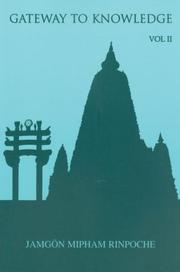
ISBN: 9627341428 9627341290 9627341460 9789627341468 9789627341420 9789627341291 Year: 2002 Publisher: Hong Kong: Rangjung Yeshe Publications,
Abstract | Keywords | Export | Availability | Bookmark
 Loading...
Loading...Choose an application
- Reference Manager
- EndNote
- RefWorks (Direct export to RefWorks)
Book
ISBN: 4998062247 9784998062240 Year: 2002 Volume: 5 Publisher: Tokyo Soka university. International research institute for advanced buddhology
Abstract | Keywords | Export | Availability | Bookmark
 Loading...
Loading...Choose an application
- Reference Manager
- EndNote
- RefWorks (Direct export to RefWorks)
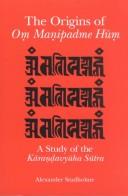
ISBN: 0791488489 0585479038 9780585479033 0791453898 9780791453896 0791453901 9780791453902 9780791488485 Year: 2002 Publisher: Albany : State University of New York Press,
Abstract | Keywords | Export | Availability | Bookmark
 Loading...
Loading...Choose an application
- Reference Manager
- EndNote
- RefWorks (Direct export to RefWorks)
"Om Manipadme Hum, perhaps the most well-known of all Buddhist mantras, lies at the heart of the Tibetan system and is cherished by both layman and lama alike. This book documents the origins of the mantra, presents a new interpretation of its meaning, and includes a detailed, annotated precis of the Karandavyuha Sutra, opening up this important Mahayana Buddhist work to a wider audience." "The Karandavyuha - the earliest textual source for Om Manipadme Hum - describes both the compassionate activity of Avalokitesvara, the bodhisattva whose power the mantra invokes, and the mythical tale of the search for and discovery of the mantra. Through a detailed analysis of this sutra, Studholme explores the historical and doctrinal forces behind the appearance of Om Manipadme Hum in India at around the middle of the first millennium C.E. He argues that the Karandavyuha has close affinities to non-Buddhist puranic literature, and that the conception of Avalokitsvara and his six-syllable mantra is informed by the conception of the Hindu deity Siva and his five-syllable mantra Namah Sivaya. The sutra reflects an historical situation in which the Buddhist monastic establishment was coming into contact with Buddhist tantric practitioners, themselves influenced by Saivite practitioners."--Jacket
Tripiṭaka. --- Oṃ maṇipadme hūm --- Mahāyāna sūtras. --- Mahayana sutras. --- Tripitaka.
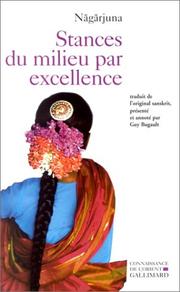
ISBN: 2070767302 9782070767304 Year: 2002 Volume: 107 Publisher: Paris : Gallimard,
Abstract | Keywords | Export | Availability | Bookmark
 Loading...
Loading...Choose an application
- Reference Manager
- EndNote
- RefWorks (Direct export to RefWorks)
Qui désire comprendre la source indienne de l'Ecole chinoise du Dhyana (Ch'an), du Zen japonais ou de la dialectique du bouddhisme tibétain doit remonter au texte fondateur : l'original sanskrit des Stances du milieu par excellence, du moine indien Nagarjuna (IIe-IIIe siècle de notre ère), dont l'influence fut immense en Asie. Ce texte fondamental est un dialogue critique avec les tenants de la scolastique du bouddhisme ancien qui avaient tendance à " prendre des mots pour des choses ", alors que l'enseignement du Bouddha était avant tout pratique et thérapeutique. Nagarjuna passe en revue des topiques familiers à la communauté bouddhique, mais aussi d'autres qui relèvent du sens commun, et les soumet à un examen critique implacable. Il nous invite ainsi à une remise en question, paradoxale et purgative, de certains de nos schèmes mentaux et vitaux tels que cause-effet, commencement-fin, identité-altérité, apparitiondisparition, mais aussi le mouvement, les choses, les êtres et leur (im) permanence, les passions, le moi, la souffrance, l'acte et ses fruits, les méprises, les nobles vérités, ce qu'il peut y avoir derrière des mots comme vacuité, nirvana, etc. La dialectique évacuatrice de Nagarjuna - qui a pour ressort une logique originale avec trois opérateurs (formels ou sémantiques) et un mode de raisonnement typiquement bouddhique (le tétralemme) - s'abolit dans sa phase ultime et ouvre la voie à une méditation sans intention ni parole.
Central philosophy (Buddhism) --- Chugan shiso --- Madhyamika (Boeddhisme) --- Madhyamika (Bouddhisme) --- Madhyamika (Buddhism) --- Madhyamikasastra --- Middle doctrine school(Mahayana Buddhism) --- Middle school (Mahayana Buddhism) --- Sunyavada (Buddhism) --- Mādhyamika (Buddhism) --- Nágárjuna --- Mādhyamika (Buddhism) - Early works to 1800 --- Mādhyamika (Buddhism). --- Nāgārjuna,
Book
ISBN: 4998062255 9784998062257 Year: 2002 Volume: 6 Publisher: Tokyo Soka university. International research institute for advanced Buddhology
Abstract | Keywords | Export | Availability | Bookmark
 Loading...
Loading...Choose an application
- Reference Manager
- EndNote
- RefWorks (Direct export to RefWorks)
Tathagatagarbha (Buddhism) --- S37/0770 --- Buddhism outside China, Tibet, Mongolia and Japan--Buddhist texts and commentaries: Mahayana Sutra --- Tathaḡatagarbha (Buddhism) --- Tathaḡatagarbha (Buddhism). --- Buddhism --- Doctrines --- Tripitạka. --- Tathāgatagarbhasūtra --- Criticism, Textual.
Book
ISBN: 9027476926 Year: 2002 Publisher: Utrecht Het Spectrum
Abstract | Keywords | Export | Availability | Bookmark
 Loading...
Loading...Choose an application
- Reference Manager
- EndNote
- RefWorks (Direct export to RefWorks)
Boeddhisme --- Bouddhisme --- Buddhism --- Indian religions --- het Oude India --- geloof en gemeenschap --- de Vier Edele Waarheden --- het Pad van Boeddha --- geestelijke ontwikkeling --- de Boeddhistische Gemeenschap --- Theravada-Boeddhisme --- Mahayana-Boeddhisme --- Chan --- Zen --- meditatie --- Tantra --- heilige geschriften --- Siddharta --- de Drie Mandjes --- de Sangha
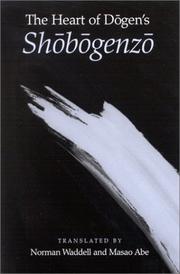
ISBN: 0791489337 0585456798 9780585456799 0791452417 0791452425 9780791452424 9780791452417 9780791489338 Year: 2002 Publisher: Albany : State University of New York Press,
Abstract | Keywords | Export | Availability | Bookmark
 Loading...
Loading...Choose an application
- Reference Manager
- EndNote
- RefWorks (Direct export to RefWorks)
"The Heart of Dogen's Shobogenzo provides annotated translations of the difficult core essays of Shobogenzo, the masterwork of Japanese Zen master Dogen Kigen, the founder of Soto Zen. This book is centered around those essays that generations have regarded as containing the essence of Dogen's teaching. These translations, revised from those that first appeared in the 1970s, clarify and enrich the understanding of Dogen's religious thought and his basic ideas about Zen practice and doctrine. Dogen's uncommon intellectual gifts, combined with a profound religious attainment and an extraordinary ability to articulate it, make Shobogenzo unique even in the vast literature the Zen school has produced over the centuries, securing it a special place in the history of world religious literature."--Jacket
Sōtōshū --- 曹洞宗 --- Sōtō Zen Sect --- Sōtō School --- Chodongjong --- 조동종 --- Doctrines --- Zen Buddhism. --- Sōtōsh --- Chʻan Buddhism --- Dhyāna (Sect) --- Zen --- Zen (Sect) --- Buddhism --- Mahayana Buddhism --- Sotoshu
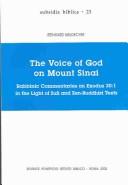
ISBN: 8876536191 9788876536199 Year: 2002 Volume: 23 Publisher: Roma Pontificio Istituto Biblico
Abstract | Keywords | Export | Availability | Bookmark
 Loading...
Loading...Choose an application
- Reference Manager
- EndNote
- RefWorks (Direct export to RefWorks)
Rabbinical literature --- Sufism --- Zen Buddhism --- History and criticism --- Bible --- Criticism, interpretation, etc, Jewish --- 222.3 --- Sofism --- Mysticism --- Chʻan Buddhism --- Dhyāna (Sect) --- Zen --- Zen (Sect) --- Buddhism --- Mahayana Buddhism --- Exodus. Leviticus. Numeri --- Islam --- Bible. --- Criticism, interpretation, etc., Jewish. --- Sufism. --- Zen Buddhism. --- History and criticism. --- Rabbinical literature - History and criticism. --- Rabbinical literature - History and criticism
| Listing 1 - 8 of 8 |
Sort by
|

 Search
Search Feedback
Feedback About UniCat
About UniCat  Help
Help News
News